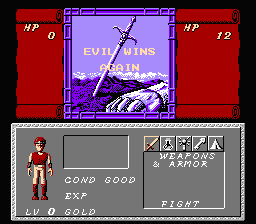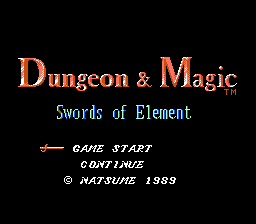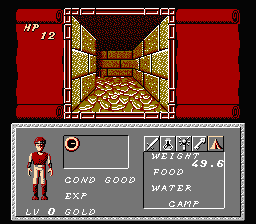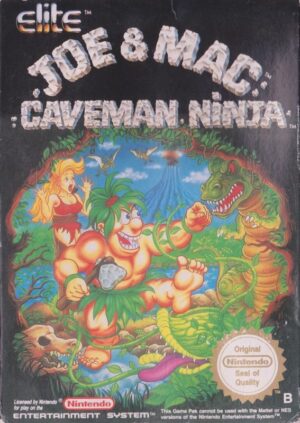Retro Replay Review
Gameplay
Dungeon Magic: Sword of the Elements plunges you straight into a classic first-person role-playing experience, blending fast-paced combat with thoughtful exploration. The real-time battle system demands quick reflexes as you parry swinging blades, dodge fiery breath, and strike back with your own steel. Unlike many turn-based peers, every second counts—mistime a block or a spell, and you’ll quickly find yourself nursing a regenerating wound or worse, a pool of your own essence.
Exploration is equally compelling. Roaming across sprawling outdoor plains, through bustling medieval towns, and into maze-like caverns, you’ll balance physical prowess with arcane ingenuity. Each of the five elemental swords you seek unlocks not just damage types but also new traversal options and secret pathways. A sword of water might let you traverse flooded corridors, while the gust blade could clear poisonous fog. This intertwining of loot and level design keeps discovery fresh and rewarding.
Magic in Dungeon Magic feels both powerful and precarious. You can specialize in fire, ice, lightning, earth, and wind—each with a unique spell list. Yet every incantation draws from your life force, encouraging you to master defensive wards and strategic retreats over brute-force spellcasting. This risk-reward dynamic adds a layer of depth: do you heal and shield to survive, or gamble health on a devastating blast to clear a room of foes?
Character progression is straightforward but engaging. Levelling up enhances your health, stamina, and magical resilience, while equipment upgrades—ranging from reinforced bucklers to glyph-inscribed robes—open new ways to customize your fighting style. With each elemental sword you claim, the balance of your build shifts, prompting you to rethink tactics and adapt to ever-more challenging environments and guardians.
Graphics
By today’s standards, Dungeon Magic’s visuals may appear dated, yet there’s a nostalgic charm to its sprite-based monsters and hand-drawn textures. The environments feel richly detailed: moss-covered dungeon bricks, flickering torchlight casting dancing shadows, and hand-painted skyboxes that evoke both wonder and foreboding. For fans of early ’90s RPGs, the aesthetic is an affectionate tribute to classics like Dungeon Master and Might & Magic.
Monster designs stand out with crisp animation loops that bring goblins, skeletons, and elementals to life. Their attack patterns often telegraph cleverly, rewarding observant players who learn to recognize wind-gust spells or earth-shatter stomps. Boss encounters—such as the fire-breathing Dracowyrm or the crackling Storm Golem—feature larger sprites and dramatic animation sequences that make each elemental showdown feel momentous.
Lighting and color palettes shift dramatically between regions, reinforcing the thematic weight of each elemental domain. The frost-bitten caverns glow with pale blues and whites, while the volcanic forges seethe in crimson and black. Secondary effects like particle sparks from lightning spells or dust clouds when your shield blocks a blow add impactful polish, ensuring that combat moments feel dynamic and satisfying.
Story
The narrative in Dungeon Magic is straightforward but effective. The evil sorcerer Darces has seized control of your homeland, plunging the realm into chaos. You are the nameless hero chosen by fate to retrieve five elemental swords scattered across dangerous landscapes and treacherous dungeons. This “quest for legendary blades” framework provides clear objectives and constant motivation: each new sword unlocks the path to the next, creating a strong sense of forward momentum.
While character dialogue is minimalistic, the game uses environmental storytelling to fill in lore. Tattered banners hint at fallen kingdoms, ancient shrines hold inscriptions of bygone heroes, and guarded journals reveal Darces’s growing tyranny. These scattered narrative breadcrumbs reward exploration-minded players and give the world a lived-in feeling without slowing down the core gameplay loop.
Encounters with NPCs—trainers, merchants, and the occasional wandering sage—add flavor rather than lengthy exposition. Side conversations may grant hints about hidden caches or warn of looming dangers, but they never overshadow your central mission. When you finally confront Darces in his dark citadel, the payoff feels earned: the culmination of countless battles, elemental trials, and narrow escapes.
Overall Experience
Dungeon Magic: Sword of the Elements strikes a fine balance between nostalgia and well-tuned game design. Its challenging real-time combat and health-draining magic create tension absent from many contemporary RPGs. Exploration and puzzle-like dungeon layouts keep you engaged for hours, and the elemental swords serve as tangible milestones that mark your progress through the story.
Difficulty ramps up steadily, so newcomers to old-school RPGs might face a steep learning curve, especially when managing life-cost spells or navigating labyrinthine ruins. However, each victory feels meaningful, and the satisfaction of forging the ultimate weapon to stand against Darces is immense. Quick respawn checkpoints and a forgiving save system help mitigate frustration without diluting the sense of achievement.
Replay value is high, thanks to multiple ways to approach combat and magic specialization. You can experiment with a glass-cannon wizard build or a stalwart knight who rarely casts a spell, discovering different tactics and hidden content on subsequent playthroughs. For fans of classic dungeon crawlers seeking a fresh yet familiar challenge, Dungeon Magic delivers a rewarding journey filled with elemental wonder and arcane peril.
In sum, Dungeon Magic: Sword of the Elements offers a compelling blend of action, strategy, and exploration. It may wear its inspirations on its sleeve, but it carves out its own identity through inventive level design and a unique magic-as-health mechanic. Whether you’re a veteran dungeon crawler or a curious newcomer, this adventure is well worth your time and courage.
 Retro Replay Retro Replay gaming reviews, news, emulation, geek stuff and more!
Retro Replay Retro Replay gaming reviews, news, emulation, geek stuff and more!









Reviews
There are no reviews yet.